Diagnostic & Molecular Pathology Residency Program (formerly Anatomical Pathology)
Welcome to the Diagnostic & Molecular Pathology Residency Program (formerly Anatomical Pathology) at the University of Alberta.
DEDICATED TEACHING STAFF
WITH RESIDENT TO FACULTY RATIO OF 1:8
WIDE REFERRAL AREA
ENCOMPASSING ALL OF NORTHERN ALBERTA AND BEYOND, LEADING TO A GREAT BREADTH AND DEPTH OF CASES
ABUNDANT ELECTIVE TIME
TO ALLOW RESIDENTS TO DEEPLY EXPLORE AREAS OF INTEREST AND HAVE A PERSONALIZED LEARNING EXPERIENCE
Interview/CaRMS Specific Information
Candidates will be interviewed via Zoom by a panel comprised of the residency program director, program administrator, faculty members involved in residency training and one or more residents. The Diagnostic & Molecular Pathology interviews are held in tandem with the Diagnostic & Clinical Pathology interviews.
Contact Us
Dr. Erin Chapman
Program Director, Diagnostic & Molecular Pathology
Ms. Kathryn Tomlinson
Program Administrator
Phone: 780-407-2606
Fax: 780-407-7660
Email: katomlin@ualberta.ca
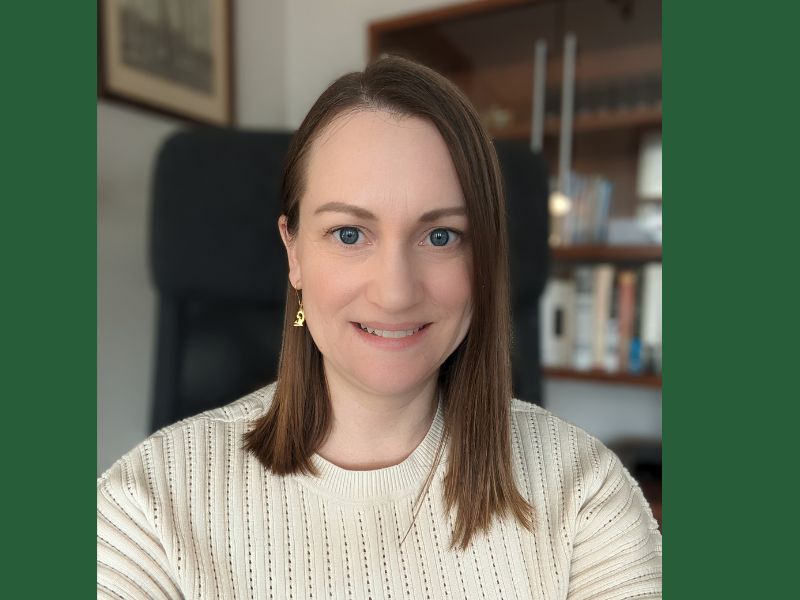
Dr. Erin Chapman
Program Director
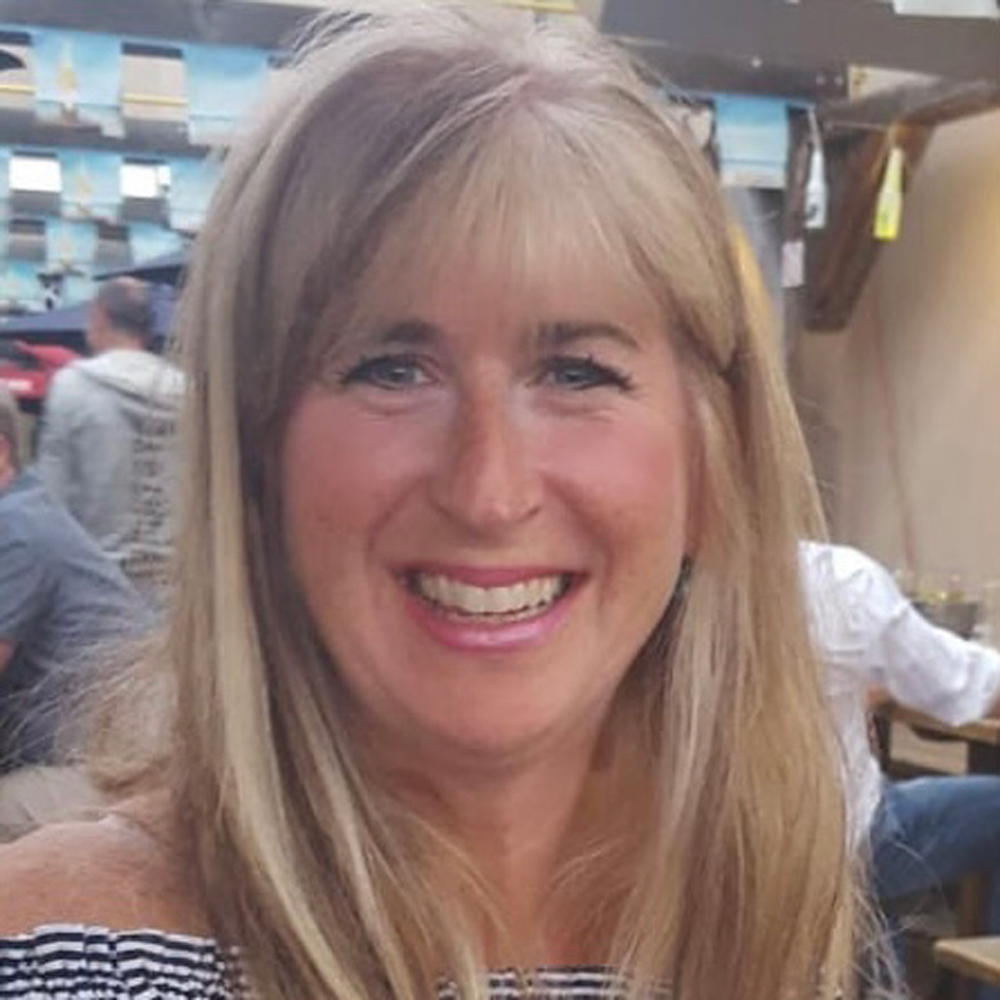
Kathryn Tomlinson
Program Administrator
Welcome to our program
We are a medium-sized program that allows for the formation of close working relationships with faculty, staff and resident colleagues. We are fortunate to have passionate and dedicated clinical faculty who provide our residents with excellent teaching and mentorship throughout their training and beyond.
Training
Our first year of training includes a two-block introduction to pathology followed by nine blocks of basic clinical training, then two additional blocks of pathology orientation. This leads into second year, and the start of in-depth pathology training.
Teaching locations
Our program is distributed across seven teaching locations in Edmonton, with each focusing on different areas of specialty and expertise. Each site is unique and offers residents the opportunity to participate as part of each of these teams, setting them up well for future employment. This ranges from community hospitals where residents see a wide variety of “bread-and-butter” cases to tertiary care centers with complex and subspecialized material, to the Medical Examiner’s Office for forensic pathology. Our teaching sites have wide referral areas, encompassing all of northern Alberta. This results in a great breadth and depth of pathology and teaching cases.
Rotations
Our rotations are a mix of subspecialty rotations (including autopsy/forensics, breast, dermatopathology, gynecology, genitourinary, hematopathology, neuropathology, cytopathology, molecular pathology and pediatric pathology) and non-subspecialty surgical pathology rotations, where the practice of a more general sign-out is learned.
Electives
There is ample elective time in our program to allow our residents the ability to tailor their training towards their own specific career goals. This may include focusing on research or a specific area of subspecialty. Electives outside of the city, province and country are encouraged and supported. We have a dedicated staff lead and process to ensure residents meet their research requirements.
Supports
We have funding available to support residents for travel associated with research presentations at conferences in addition to funding available for continuing medical education. As well, the program supports resident-led wellness initiatives with funding.
Additional resources
In addition to our training rotations, we have several resources in place to complement our residents’ clinical training and help facilitate their preparation for Royal College Examinations. These include:
- weekly academic half-days with a revolving two-year curriculum
- numerous interdisciplinary and pathology rounds (i.e., province-wide pathology interesting case rounds, one-on-one cytology teaching with experienced cytotechnologists)
- twice yearly in-house examinations modeled after the Royal College exam
- funding for senior residents to attend a pathology exam preparation review course
- dedicated faculty who participate in mock oral examinations to support senior residents in preparation of their Royal College exams
We hope this site provides you a bit of a snap-shot about our training program, and we look forward to meeting with you!
Dr. Erin ChapmanProgram Director
Our Program
Our program trains highly competent anatomical pathologists for practice in both academic and community settings. They make substantial contributions to patient care, education and/or research in the field of pathology. Our trainees become medical experts in anatomical pathology, collaborators with colleagues inside and outside of the laboratory, leaders, and teachers. We train residents to meet the needs of patients not only in Alberta, but across Canada.
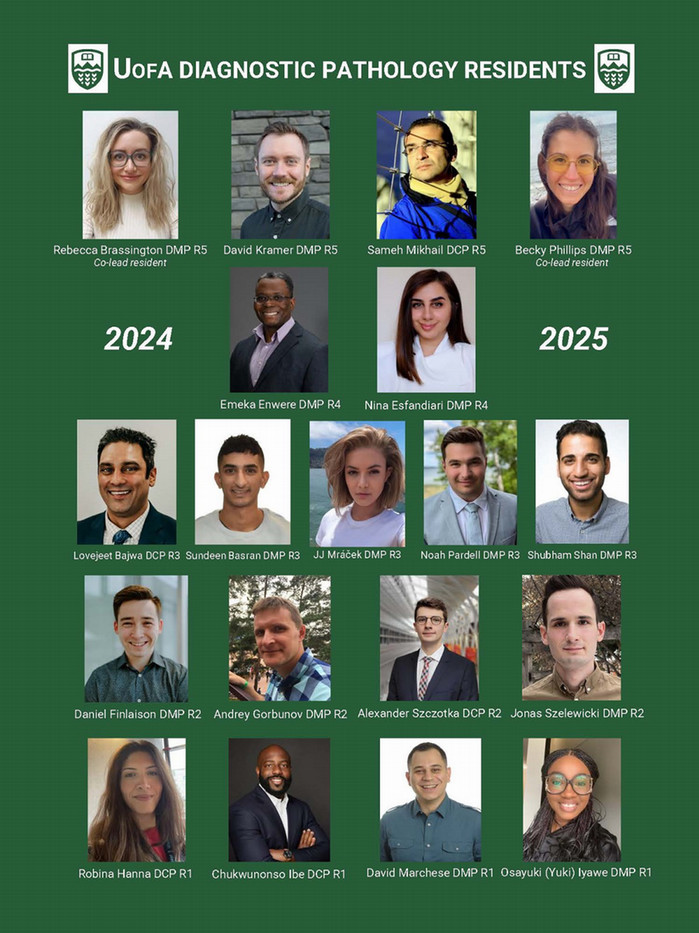
Program Highlights

We have highly dedicated teaching faculty, including staff pathologists, pathology assistants, and cytotechnologists. The ratio of residents to faculty is 1:8.

Opportunities for interprovincial and international electives are available and encouraged (COVID pandemic allowing).

There are no mandatory rural rotations but these are easily arranged and encouraged (COVID pandemic allowing).

This is a comprehensive program providing experiences in all facets of anatomical pathology. This includes tertiary academic hospitals, community hospitals, and private facilities. The regional model of health care delivery provides all residents access to a broad range of cases and complexities.

Research is actively encouraged, and research electives are available to all interested residents. Residents present their research at the annual departmental resident day. In addition, they can present at national or international meetings during the course of their training with funding assistance available.
Program Supports
Career Planning
Career planning is discussed every 6 months with the program director during one-on-one 6-month reviews. In addition, residents are encouraged to talk to their mentors, other residents, and other teaching faculty in this regard. Formal lectures on career planning are part of academic half day lecture series.
Mentorship
We have an informal mentorship program to aid residents and provide another avenue for support. Residents are encouraged to ask any faculty member from any teaching facility to act as their mentor. We suggest choosing a mentor by the end of the PGY2 year.
Competency By Design (CBD)
Academic advisors are assigned to each resident to help guide them through CBD and their learning journey.
Residents get continuous, specific feedback through the CBD program and regular direction from the Competence Committee.
The Office of Advocacy & Wellness (OAW)
is an excellent resource to obtain confidential counselling; they also advocate on behalf of residents in a variety of matters.
Alberta Medical Association’s Physician and Family Support Program (PFSP)
Provides confidential support, and is open 24/7.
Residency at a Glance
In Competency By Design (CBD), the previous structure which divided the programs into PGY years will instead be replaced by the following 4 stages. The overall length of the program is expected to be 5 years for most residents.
Includes basic skills and concepts not necessarily covered in medical school, including laboratory safety, microscopy skills, principles of specimen handling and workflow in the laboratory, and basics of laboratory testing.
Transition to Discipline (2 blocks): (1 block = 4 weeks)
Orientation to Histology, Anatomy, and Basic Pathology (2 blocks)
- Includes rotations in relevant clinical specialties (General Surgery, Internal Medicine, Dermatology, Medical Oncology, Radiology, etc.).
- Experiences in normal histology/morphology, frozen section, autopsy, grossing of simple specimens, and reporting simple specimens are included, with one-on-one guidance from a senior resident.
Foundations of Discipline (FD, 8 blocks):
Emergency Medicine (1)Internal Medicine (1)
Gynecologic Oncology (1)
Medical Oncology (1)
Surgery (1)
Vacation (1)
Re-Orientation to Pathology (1)
Surgical Pathology Junior UAH (1)
- This stage comprises the bulk of the program (at least three years) and includes rotations in anatomic pathology and subspecialty areas including neuropathology, cytopathology, molecular pathology, breast and gynecological pathology, and pediatric pathology.
- Trainees will gain experience in autopsy, intraoperative consultation, and fine needle aspiration.
- Trainees will acquire skills and knowledge to become effective and knowledgeable laboratory consultants.
Core of Discipline (CD, 43 blocks):
Surgical Pathology Junior UAH (6)
Surgical Pathology Junior RAH (1)
Surgical Pathology Junior GNH (1)
Surgical Pathology Junior MCH (1)
Surgical Pathology Senior UAH (2)
Surgical Pathology Senior RAH (2 blocks PGY3; 2 blocks PGY4; 4 blocks total)
Surgical Pathology Senior GNH (1)
Surgical Pathology Senior MCH (1)
Cytology Senior UAH/ DLDx (1)
Dermatopathology UAH (1)
Breast Pathology MCH (1)
Molecular Pathology #1 (1)
Molecular Pathology #2 (1)
Study Leave #2 (1)
In this stage, trainees consolidate their skills to work independently and demonstrate leadership in rounds, teaching and other activities.
Transition to Practice (TP, 12 blocks):
Surgical Pathology Senior UAH (2 blocks)
Surgical Pathology Senior RAH (1)
Surgical Pathology Senior DLDx (1)
Electives (8) *ideally used for training in area of special interest
Teaching Hospitals
We are a fully accredited program that follows the guidelines set out by the Royal College of Physicians and Surgeons of Canada. Our residents will be learning at multiple different sites.
University of Alberta Hospital
Misericordia Community Hospital
Alberta Precision Laboratories, Baselab: #200, 10150 - 102 Street, Edmonton, AB, T5J 5E2
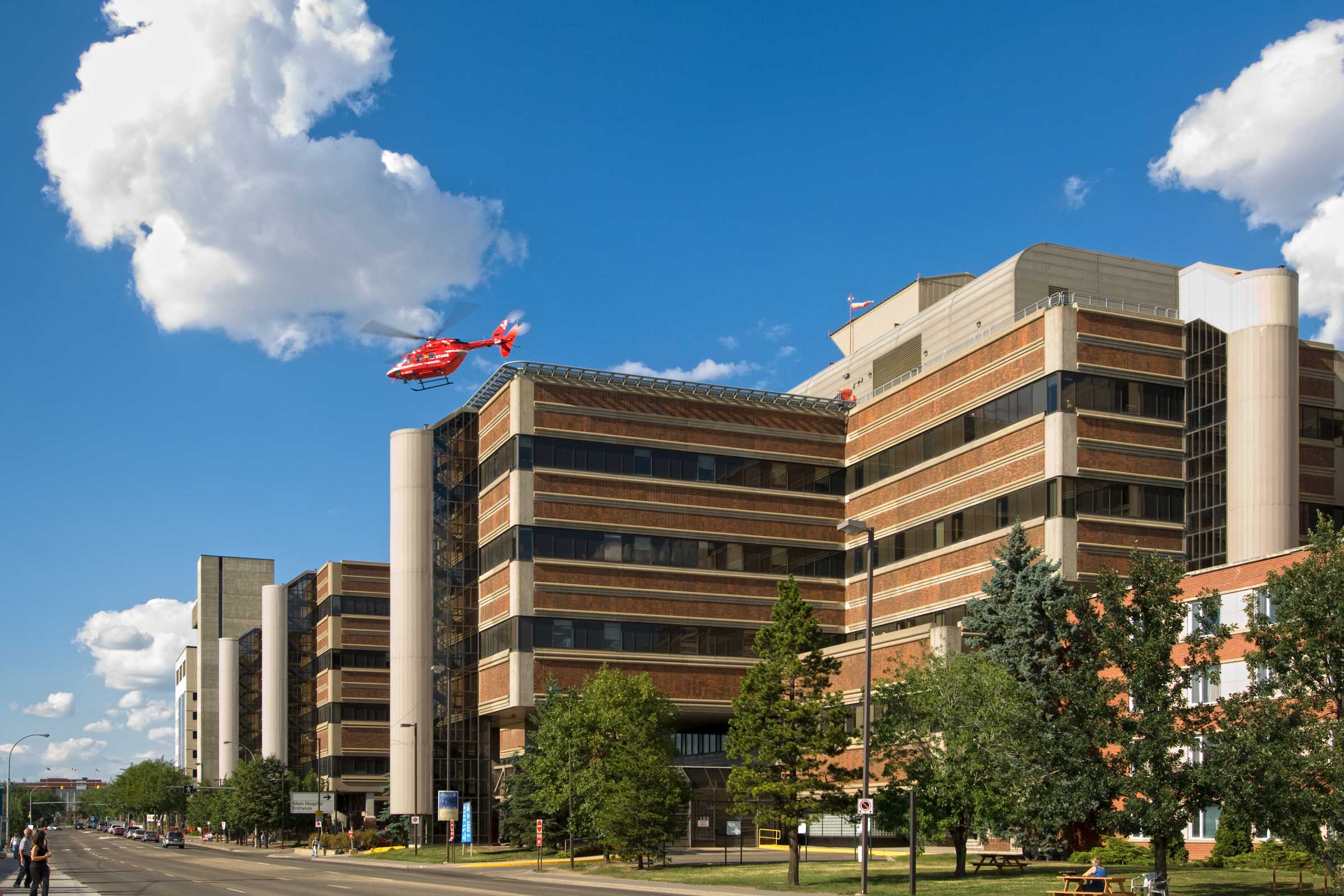
Frequently Asked Questions
The opportunity to understand the nature of disease in an in-depth way that isn't achieved in any other specialty. You get to practice scientific diagnostic medicine over a broad range of subjects and you have a fair degree of control over your schedule.
There is limited direct patient contact - you'll never have an office full of patients who regard you as their doctor, but limited patient contact does not mean you will sit alone in the basement! The work you do is at the foundation of all medicine, and patients cannot be managed without your diagnosis. In order to do this, you must interact and communicate constantly and effectively with your pathology and technical colleagues regarding cases and to troubleshoot problems. You will also be in frequent contact with clinicians by phone, email, or in person to provide advice, discuss cases and diagnoses, or for frozen sections. Tumour boards are an essential component of pathology practice, in which your effective interaction and communication with clinicians, radiologists and other pathologists is integral to providing optimum patient care.
Opportunity to have an academic career that readily incorporates teaching, research, and clinical pathology with an excellent work-life balance. Prefer an intellectual specialty with non-stop interesting diagnostic puzzles over a procedural specialty. You always learn something new everyday and are at the forefront of medical discovery.
Anatomical pathology, by definition, encompasses the entire medical spectrum. Think of any disease process, from pediatrics to geriatrics, neurosurgery to dermatology, pathologists diagnose diseases in all organs. Many pathologists choose to subspecialize in one organ system (breast, GI, lymphoma, etc.) and may focus their practice mostly or even exclusively in that system.
Depends upon the setting. Most pathologists are involved in clinicopathologic rounds, laboratory supervision, and direct diagnostic work in biopsies, surgical pathology, hematology, etc. Academic pathologists teach students and residents, and may have dedicated time for research in addition to their clinical sign out duties; community-based pathologists usually sign out cases for the majority of their time, but often have major administrative roles in their institutions/medical staff organizations. Some community hospitals also train residents, and the pathologists will be involved in teaching. There is very little to no evening/weekend call in most settings. Call is always taken from home and usually problems can be solved over the phone or by a brief hospital visit, typically for a frozen section.
The lifestyle in pathology is hard to beat. It is possible to do pathology and do it well and still have a life outside medicine. Most pathologists work regular office hours and do not haunt the hospital halls at night! Working hours are often flexible in many settings, as non-urgent cases do not complain about having to wait a few hours, unlike a waiting room full of patients!
Very easily. Working hours are very regular for pathologists and call duties are minimal. In pathology, one can achieve a very satisfactory work-life balance that is ideal for raising a family.
In Alberta, pathologists receive a fixed income according to a standard contracted grid determined by experience. Starting incomes are very competitive compared to other non-surgical specialties. Pathologists generally have no or minimal overhead and do not deal with hassles of billing.
While histo/cytomorphology will remain the mainstay of diagnosis, there is also increasing usage of molecular techniques for diagnosis, prognostic determination and treatment responses. These are exciting changes, particularly as new tests are developed and brought into daily practice. Molecular pathology is an extremely popular fellowship as a result. Digital pathology and computer-aided diagnosis will come into play, helping the pathologist with tedious tasks, but NOT replacing the pathologist (certainly unlikely in the next 50 years)!
Residency Program Questions
Someone who is hard-working, self-motivated, and passionate about understanding the nature of disease. Someone who is a team-player, and has excellent communication skills. It is also important to have strong clinical knowledge which serves as a basis for everything we do in pathology.
Acquire a sound foundation of medical knowledge, develop excellent communication skills both with patients and other medical colleagues, and explore other specialty areas to ensure that pathology is the right choice for you. Doing a pathology elective at any institution in North America is a good way to understand what we do (when there isn't a global pandemic happening!) and research is strongly encouraged.
To produce top-quality diagnostic pathologists who are passionate about what they do. This is done by ensuring exposure to a large volume of cases, exposure to teaching and research opportunities and a full range of practice patterns in a collegial and collaborative environment. We support the development of both academic pathologists and hospital/community based pathologists in this program.
There is built in time to experience all the subspecialties of pathology from pediatrics to molecular pathology. In addition, there is ample elective time that can be used to pursue subspecialty training.
- Clinical rotations: determined by the clinical service.
- Pathology rotations: residents cover UAH surgical pathology after-hours call for one week at a time, approximately every ten weeks. It is home call, and most issues can be dealt with by phone. On rare occasions, you may have to go to the hospital, typically for a frozen section. Residents rotating at UAH also cover daytime call to triage "rush" specimen requests or inquiries from clinicians, which typically comprises one or two phone calls a day.
The greatest strengths of the program includes the huge volume of cases and excellent teaching with ever-expanding opportunities for research and teaching. The U of A department is strong in all laboratory disciplines and able to mount strong specific programs in anatomical pathology. Our various hospital sites allow you to experience pathology practice in a variety of settings and learn from different preceptors and hospital "cultures" without even leaving the city. Success rates on the first attempt at the Royal College exam has been 100% for CMGs in the last five years.
Almost all students who want pathology as their first choice will be matched in the first round; most will also get their first choice location. You should have no difficulty in securing a residency position and succeeding in the FRCPC examinations.
A research project is required, and must be presented at an intradepartmental or external scientific meeting.
Research is present in varying degrees among pathologists. Our research strengths include a world-renowned renal and transplantation pathology research program. Some are 75% research, 25% clinical practice, while others do no research at all. It is pathologist dependent.
The annual pathology Banff course, the Canadian Association of Pathologists (CAP) annual meeting and the United States and Canada Association of Pathologists' (USCAP) annual meeting are all regularly attended by residents and pathologists.
Resident Testimonials

What I like about Edmonton:
(spoiler alert, pretty much everything!!)
- The SUN. Edmonton has more sunny days than almost any other Canadian city. On summer solstice, the sun rises at 5am and doesn't set until after 10pm.
- The NATURE. We have the largest expanse of urban parkland in Canada. The river valley has mountain biking trails as well as lots of walking/running trails.
- So. many. festivals. Whether it's music or food or art or diverse cultures, the festival city has you covered!
- We have Duchess Bakery (named the best bakery in Canada by Buzzfeed!) and fantastic dining (quality farm-to-fork local ingredients)
- Good bike lanes, good (and expanding) public transportation, driving (and parking) is convenient as well.
- Close to a gorgeous national park (Elk Island) which is also a dark sky preserve! I've seen a meteor shower there and it's awesome.
- Friendly city, very liveable. Great place to meet people, also a great place to raise a family.
Training program highlights:
- World-class experts and educators; global reputation of the U of A
- Incredibly diverse cases, including transplant
- Proactive approach to CBD
- Very supportive Program (seriously!)
- Responsive to resident feedback
- Great research opportunities
- Well-equipped facilities and lab
- Excellent track record of success (licensing exams, fellowships, careers) for residents
One piece of advice for candidates going through CaRMS?
Read over your CV prior to CaRMS and ensure you can explain and elaborate upon everything within (including your hobbies/extracurriculars!) I was asked about yoga, which I had listed as an interest. I told the story of how I went into a new class in a popular and busy hot yoga studio. I was surprised & happy to find a good-size space left by the wall and I took it. This class was the hottest and hardest of my life, absolutely miserable. After it finishes, the teacher stops by my mat and smiles. "Great work! People don't usually like being by the vent!" ...Own your successes, own your failures, and don't be shy about sharing your stories!
– Dr. Rebecca Brassington (PGY-2)
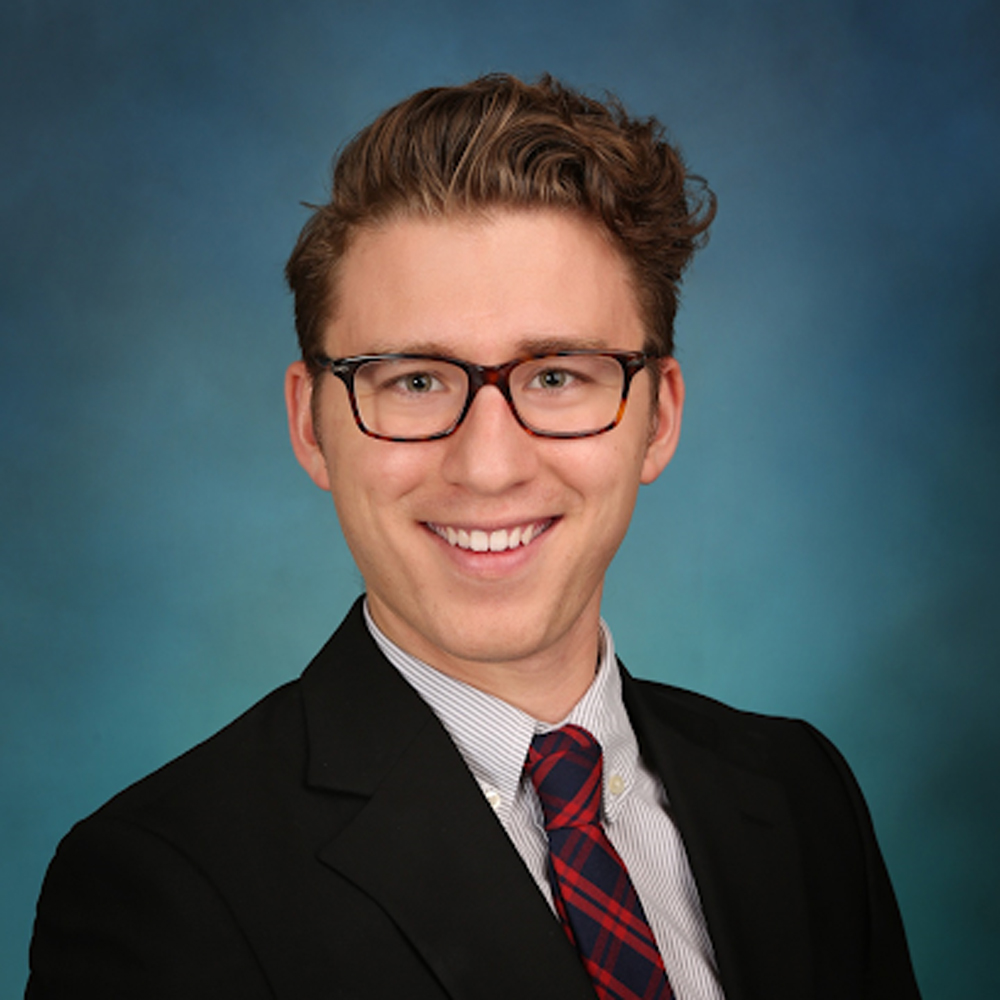
What do I like about Edmonton?
Edmonton is a great place to live and work! The city is the perfect size: offering the benefits of a big city while still maintaining the character of a tight-knit community. I like to run and get outside so Edmonton’s River Valley and trails are great. Edmonton has a surprisingly good restaurant scene, and lots of hidden gems. The Garneau area with Garneau Theatre, Remedy Café, and several great little restaurants is a great spot, and Edmonton’s downtown and Whyte Ave. always have something new to check out. Edmonton’s Public Library system is actually one of the best in the world and I’m at my neighbourhood library once or twice a month—even if I mostly use it for video games and movies!
What are the highlights of your training program?
Edmonton has a wide breadth of pathology as the home of a robust transplant program, pediatrics, head and neck, and all the diverse specialties of a world class regional center. If you’re like me you might not know what you want to do when you finish Pathology residency—a program like Edmonton trains you well for a variety of different career paths.
One piece of advice for candidates going through CaRMS?
This will sound ridiculous but—HAVE FUN! All of my memories of the CaRMS interview process are positive! Putting together the application and stressing about the deadlines sucks but now that that’s over you can hopefully relax and enjoy getting to hear about the different programs across Canada! Try and get a good idea about the different programs and do your best to make a good impression but at the end of it all it’s just such a crazy and unique experience and I hope you get to enjoy it like I did!
– Dr. Conrad Moher (PGY-3)
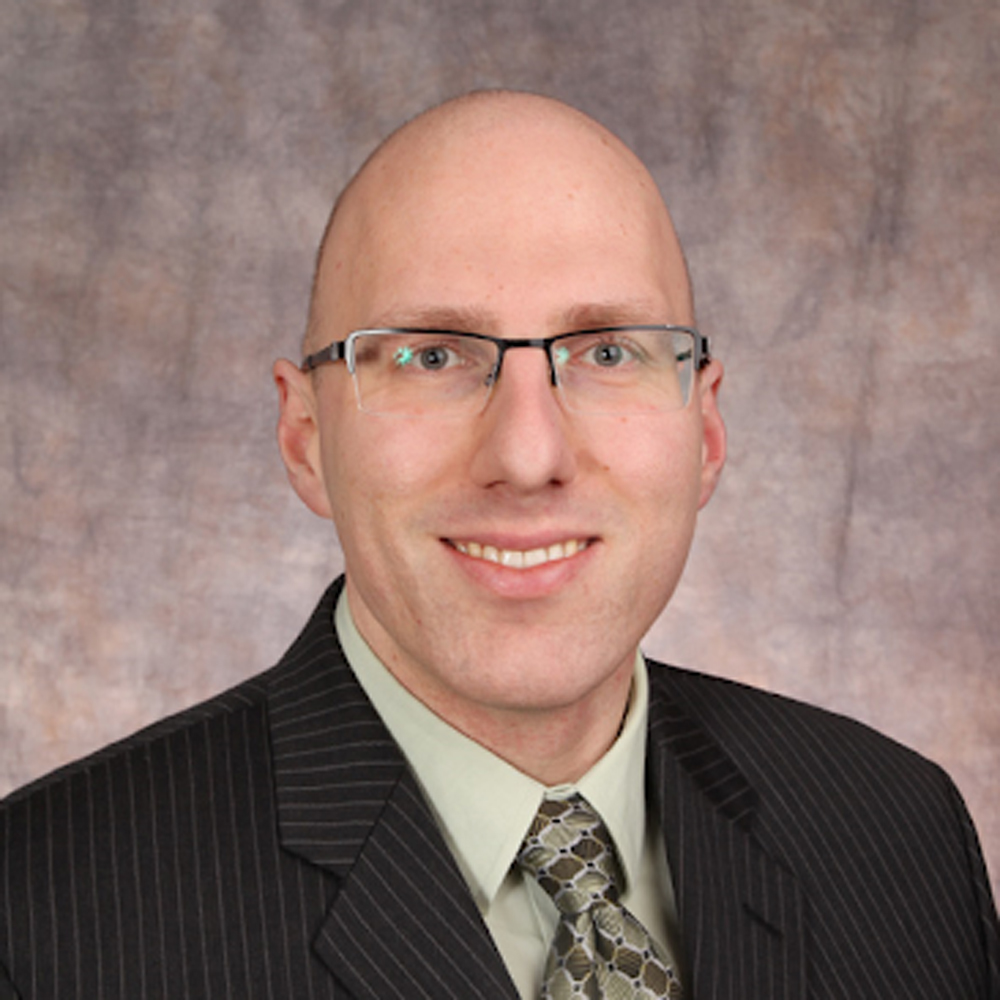
What do you like about Edmonton:
Everything is so close by. I live near the university, which means I'm within walking distance of the two major social hubs (Jasper Ave and Whyte Ave) with many great restaurants and pubs, as well as the river valley for walks, runs, hikes, or biking.
Major concert/festival hub in Canada
Easy to commute around the city with most training sites minutes away on the train
Proximity to Rockies allows for weekend get-away trips
Very reasonable cost of living (many residents rent/own near campus)
What are the highlights of your training program?
I am in my final months of training, having secured a competitive American fellowship and feeling well-prepared for my Royal College and American Board examinations. I owe much of my success to my training in Edmonton. This was my top ranked program and I would absolutely choose this program again. In my opinion, the major strengths of this program include:
Training at two major tertiary care centers with a large service area. We see cases from Edmonton, Northern Alberta, parts of BC and Saskatchewan as well as parts of the territories. In addition, Edmonton is also a major solid organ transplant center. This means you get to see a wide breadth of pathologies including late-stage disease.
We have a small program (15 residents combined for AP/GP). This means there is limited competition with other residents for the rare/interesting specimens and grossing time. A smaller program also allows flexibility for our program administrators to adjust schedules and accommodate elective/observership opportunities for fellowships or employment.
Non-subspecialty-based surgical pathology rotations. Pathology can be very hit and miss with regards to what comes across the gross bench while on rotation. Having non-subspecialty rotations means you will have the opportunity to see any interesting case while on rotation, rather than limiting your experiences to a certain organ system which may or may not yield any interesting cases during that time (this is particularly important for hitting Royal College mandated CBD requirements).
Abundant elective time to explore subspecialty interests, address areas of weakness, and pursue out of town electives/observerships for fellowships or employment.
Two Royal College-style in house examinations per year, in addition to participation in the Resident In Service Examination (RISE). These biannual examinations get residents familiar with the style of the Royal College and American Board Examinations so that residents know exactly what to expect come the big day.
Streamlined first year with three pathology blocks and clinical rotations structured around your learning. Our program directors have wonderfully advocated for all clinical rotations to be centered around your learning, either preparing you for LMCC part II or for your career as a pathologist (for example, our gynecology rotation does not include obstetric duties).
Well-designed CBD program. Dr. Chung has been involved with the implementation of CBD in anatomical pathology from the very beginning. This means she knows the requirements inside and out and uses this to best structure your training to meet Royal College requirements.
Supportive learning environment. The program directors genuinely care for and support their residents. Resident concerns can be brought up at any time, but are formally assessed at quarterly meetings with leads from all sites around Edmonton. During my residency, a number of changes have been implemented based on resident feedback to optimize training. Furthermore, our resident group is a tight-knit group with a collegial culture and frequent formal and informal social gatherings (Covid-permitting).
Advice going through the CARMs process:
It's been a while since I've done CARMs and this year is such a unique format, so this is a tough one. What I will say is that if you have been offered an interview, you have been identified as someone with interest in the field and a high likelihood of success. Feel confident about that! The interview is an opportunity for the program to determine whether you would fit in with the culture of the program. Likewise, it also gives you an opportunity to see whether you fit in with a particular program. This may be difficult with the virtual format, but try and get a sense if the culture of the program is right for you. I was fortunate to find a good fit and it has made my experiences that much more positive. Best of luck!
– Dr. Peter Dromparis (Graduate 2021)

What do you like about Edmonton?
Having grown up in Vancouver and Hong Kong, I find that Edmonton has the amenities of bigger cities, yet maintains the charms and convenience of a mid-sized city. It has the large malls, major festivals and well-established infrastructure, yet still features relatively low traffic, very down-to-earth people, and close proximity to all things (almost everything is within a 20 minute drive from the University of Alberta).
The winters can get cold (January/February mostly), but they are just so sunny. I am inside the hospital for much of the day, so I can enjoy the sun without being exposed to the cold. Some say staring into my microscope is like looking at the sun anyway - the brightness is way too high!
I ruptured my Achilles tendon just after moving to Edmonton. As I hobbled around the city on crutches, I had strangers offering kindness to me almost daily (“Can I carry your groceries?”, “Do you need a ride?”, “Don’t worry about the bus fare, just hop on.”). As I look neither rich nor famous, I am quite certain these are genuine acts of kindness. Edmontonians are a very kind and friendly bunch.
What are the highlights of your training program?
In many ways, our program reflects the city itself.
We are a smaller program with the case variety and volume of a larger one. From surgical to molecular pathology, from high-volume community practice to highly subspecialized consultant cases such as transplant biopsies, from Edmonton to Yellowknife (part of our catchment area), we can experience all aspects of anatomic pathology within Edmonton.
However, we also have the strengths that a smaller program affords, namely ease of effecting changes, flexible training schedule, and a tight-knit group of residents. Residents often propose new improvements to program structure (e.g. scheduling, extra funding) that are often quickly approved and implemented. Our residents get along well, especially after a few beers (prior to Covid times). There is a good tradition of senior-to-junior teaching.
Our pathologists come from around the world, and often have good connections for research and fellowship opportunities. Our recent graduates have gone onto fellowships across North America, and some directly into practice.
What is one piece of advice you would give candidates going through the Carms interview process?
I am neither a quick thinker nor an eloquent speaker, and it gets even worse in English. So practice was the key for me. It does not matter if your practice partner(s) is applying for surgery/internal medicine/clown school, just have someone ask you questions and listen to your answers. Your answers may be awkward at first, then they become robotic, but finally they will sound natural.
P.S. If someone asks “If you can be one type of cell in the body, what would you be?”, don’t say “Hepatocytes because of all the drugs and alcohol they see”. My interviewers were not impressed.